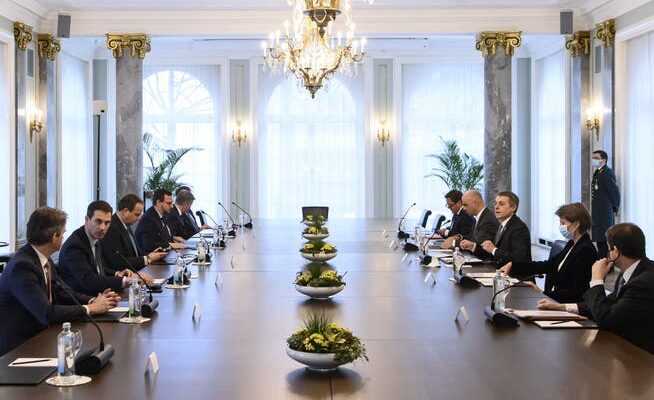The Federal Council is discussing Plan B in European politics. However, the governing parties are setting conditions that make a fresh start with Brussels difficult.
At the Von Wattenwyl Talks in February, the Federal Council discussed European policy with the leaders of the governing parties.
If the Corona crisis is a marathon, then European politics is a multiple gigathlon. Only slowly does it become apparent what the goal is. The Federal Council wants to hold a retreat on the subject at one of its next meetings. The departments hold intensive discussions. Foreign Minister Ignazio Cassis is in charge, but Justice Minister Karin Keller-Sutter and Economics Minister Guy Parmelin are also heavily involved. Cassis has already indicated that the Federal Council is aiming for a kind of Bilateral III.
It is an old trade-off that Switzerland, as an export nation in the heart of Europe, has to make again and again: integration into the EU internal market here, sovereignty there, which could be partially restricted. Almost a year after the framework agreement was broken off, the discussion on the institutional issues has got going again.
So far, voices from business and research have primarily spoken out that are directly affected by the ice age with the EU – or could soon be affected. In order for a new start to succeed, however, the Federal Council parties in particular must participate. A solution is unthinkable without them, although only the SVP has a crystal-clear opinion. SP, FDP and Mitte, on the other hand, are all divided. But what attitudes do they have in common?
FDP: regulate each agreement separately
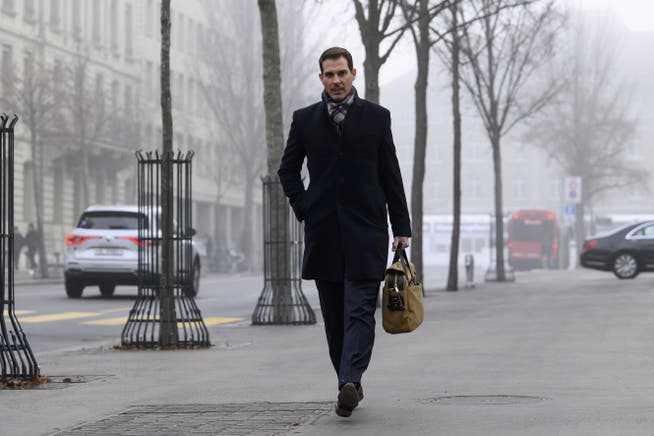
The FDP President Thierry Burkart wants to continue the bilateral path.
The suggestions: FDP President Thierry Burkart outlined his party’s position in the NZZ in early November. He spoke out in favor of continuing along the bilateral path. He rejected the other options, EEA membership or a return to a free trade agreement. In principle, the FDP is still open to accepting rules for dynamic legal adoption and dispute resolution. In the case of the latter, however, the European Court of Justice (ECJ) is to play a less important role than was envisaged in the framework agreement. Burkart speaks of a “simple arbitration”.
What is also new is that the FDP is no longer striving for a comprehensive framework agreement, but wants to anchor the institutional rules of the game separately in the individual agreements. She also advocates a larger package of negotiations, which should also include new contracts, for example in the electricity sector. When it comes to the free movement of people, the FDP leader insists on exception clauses, for example when and how newcomers from the EU can receive social assistance.
The assessment: The approaches of the FDP can help to simplify future negotiations and steer the domestic political discussion in a new direction. In the case of the framework agreement, the debate revolved around complicated and unwelcome issues relating to legal transfer and dispute resolution. If a deal also includes new contracts that bring benefits to Switzerland, this is likely to change the discussion. The question of what Switzerland gains from swallowing institutional toads would be easier to answer.
However, the big, substantive issue remains unresolved: What next for the free movement of people? After all, unlike other parties, the FDP is not trying to give the impression that it would be realistic to completely exclude the agreement on the freedom of movement. However, Burkart insists on mandatory exceptions. The EU has so far refused to do so. As long as this remains the case, a solution is difficult to imagine. In the words of Burkart: “Then it will remain a stalemate.” It is also questionable whether the EU is willing to negotiate individually and without general rules on the agreements in question.
Center: Exclude free movement of persons
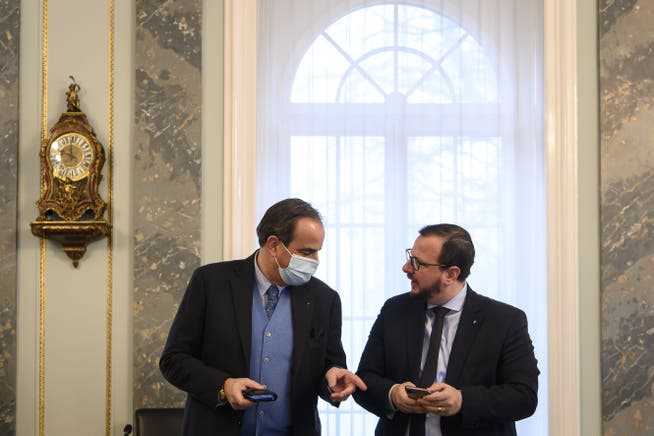
The head of the middle with President Gerhard Pfister (left) and the parliamentary group leader Philipp Bregy brings protective clauses into play.
At the same time, the party leaves a back door open in this sensitive area: the protection of wage levels and social security as well as questions about the right of residence could also be secured or clarified with handy protective clauses. Central Federal Councilor Viola Amherd made such a proposal at the last minute in the framework agreement. She suggested wringing a kind of protection clause from the EU in the Union Citizens Directive. In the first few years, this would give Switzerland the right to revoke the adoption of the new rules if, for example, certain thresholds were exceeded in social assistance.
The assessment: The position corresponds to the lowest common denominator of the middle. For the time being, the exponents from the conservative home countries and the more Europe-friendly wing can live with that. However, if the party insists on excluding the free movement of persons, Switzerland can forget about a new start with the EU. Unresolved issues surrounding this agreement were the reason why Brussels called for an institutional solution. With the framework agreement, Switzerland has already tried unsuccessfully to exclude sensitive issues relating to the free movement of people.
Safeguard clauses, on the other hand, could be a way to find a solution with the EU. In the case of the newest EU member states, Switzerland was able to limit immigration with a valve clause until 2019 if it exceeded a certain threshold. However, the mechanism was temporary. In addition, what is interesting about the proposal from the center is what it does not say: safeguard clauses would only make sense if Switzerland adopts the controversial Union Citizens Directive.
SP: Make haste makes waste
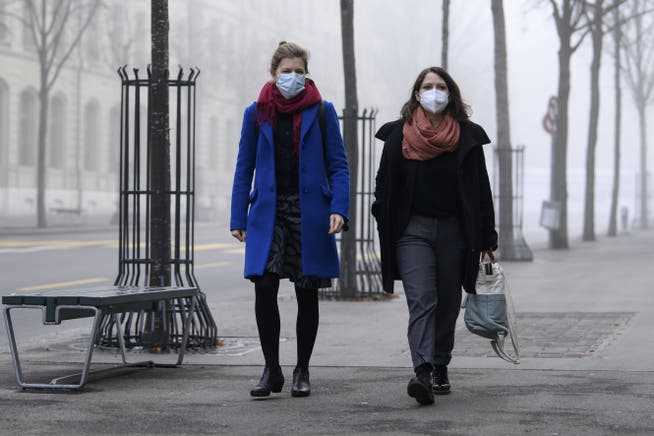
The SP with co-president Mattea Mayer (right) and deputy leader Nadine Masshardt wants to solve the structural issues with the EU by 2027 at the latest.
The suggestions: The SP leadership roadmap includes a two-phase model. First, a “stabilization agreement” limited to five years should bring relaxation. In this phase, it is envisaged that Bern will unilaterally adopt EU law and increase cohesion payments. In return, Brussels would have to allow Switzerland to participate fully in EU programs again, including in research.
In the second phase, the two partners are to negotiate a new “economic and cooperation package”, which could come into force according to the SP 2027 plan. On the one hand, this would include new agreements, for example in the areas of electricity and health. On the other hand, as requested by the EU, the institutional rules of the game and the consolidation of the cohesion contribution are to be anchored in it. The SP has defined EU accession as a long-term goal.
The assessment: The SP proposes to clarify the old issues at a slow pace. In view of the muddled domestic political situation, this is not unreasonable. If Switzerland rushes into new negotiations, there is a risk that it will quickly find itself in the same impasse. The SP would oppose side by side with the unions if, from their point of view, the adoption of the law on the free movement of people threatened wage protection.
However, the SP plan is also associated with considerable risks. The Federal Council has taken the first steps to stabilize relations with the EU and released the second cohesion billion. But Brussels doesn’t want anything to do with stabilization without institutional rules. If the existing agreements are no longer updated by 2027, the question arises of what value they will then have. Would Switzerland and the EU still have an interest in renewing and further developing the bilateral path? In addition, the diplomats would lack negotiating power in the event of a new start if Bern now increases the cohesion contribution.
SVP: No institutional connection
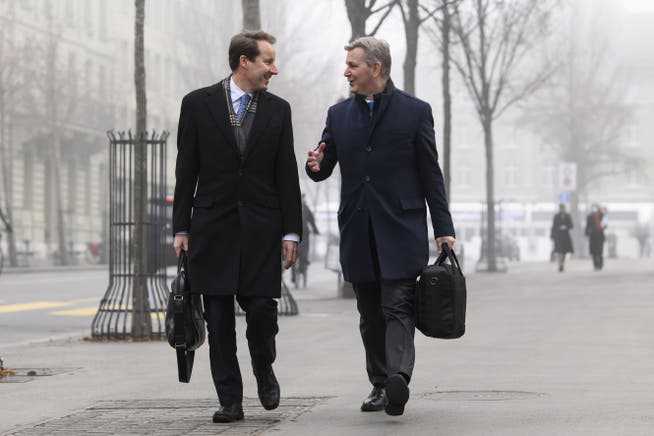
The SVP with parliamentary group leader Thomas Aeschi (left) and President Marco Chiesa does not want any rapprochement with the EU.
The suggestions: The position of the People’s Party can be summarized most briefly. She wants to fight every institutional solution with the EU and is therefore not making any proposals. The SVP rules out a dynamic assumption of rights or a dispute settlement with “foreign judges”. The preservation of the constitutionally enshrined independence is central, even if this could lead to costs in some areas, says Vice President Franz Grüter.
The question, however, is what the alternatives are. According to Grüter, Switzerland should make autonomous adjustments to EU law where it is in its interest. Important exponents such as the parliamentary group leader Thomas Aeschi also called for a modernization of the free trade agreement of 1972, analogous to the agreement between the EU and Canada. But that would probably put agricultural protection under pressure. In 2021, the party no longer wanted to hear about the idea.
The assessment: The SVP is the only Federal Council party to oppose an institutional solution without any ifs or buts. She remains vague on the question of how Switzerland should alternatively secure relations with its most important partner.
